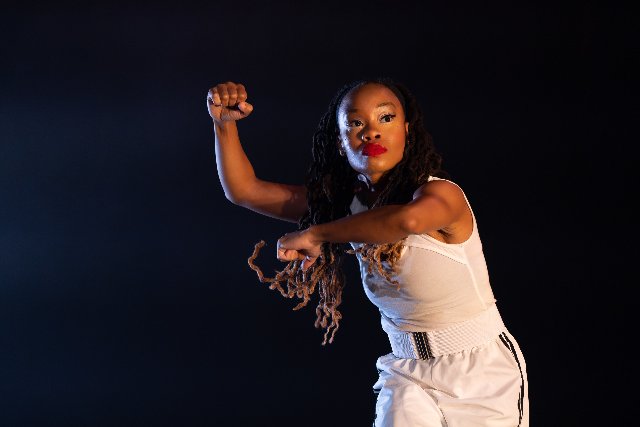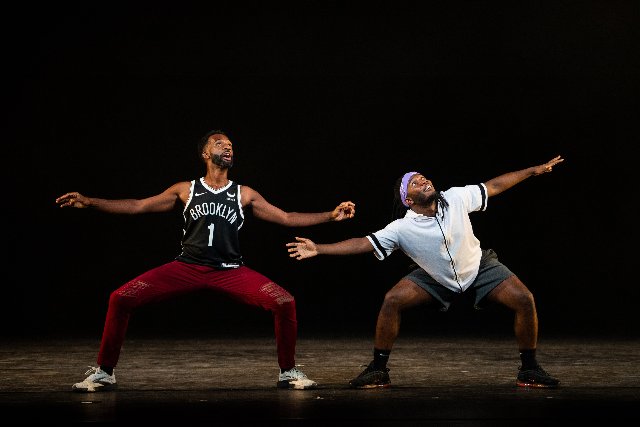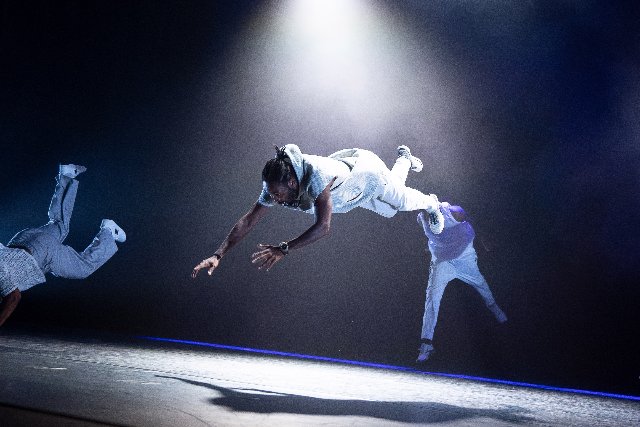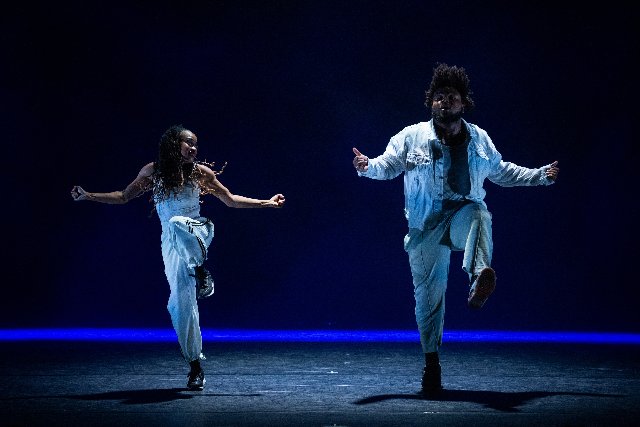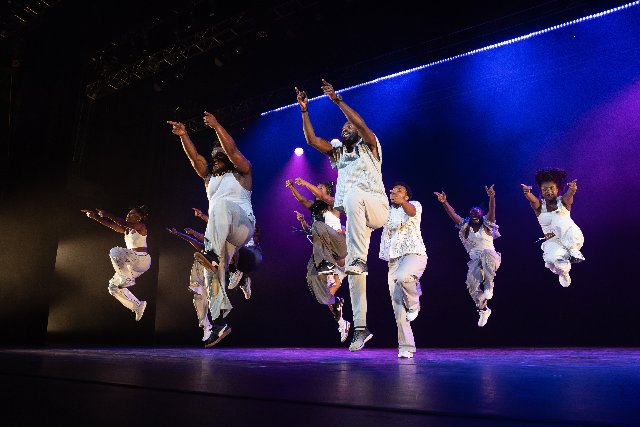Camille A. Brown at Jacob's Pillow
World Premiere of I Am
By: Charles Giuliano - Aug 07, 2024
Superstar dancer, choreographer, and Tony nominated director, Camille A. Brown, has a long history with Jacob’s Pillow. She first performed in Becket with Ronald K. Brown/Evidence in 2002. Her company Camille A. Brown & Dancers (CABD) made their Pillow debut in 2009 al fresco as part of the Inside/Out program which focuses on emerging talent. The company returned in 2010 to the Doris Duke Theatre and the main stage of Ted Shawn Theatre in 2017. In 2016 she was accorded the highest honor The Jacob’s Pillow Dance Award.
This past winter, with support from the Hunter Foundation, she and the company were in residence developing a major new work. It is based on themes from the “I Am” episode of the HBO series Lovecraft Country. As the program notes “This new work picks up where ink left off by blasting us into the Universe where anything is possible and features various dance genres of the African Diaspora.”
As the blog Vulture states “The final half-hour of ‘I Am’ is everything I could ask for in a show like Lovecraft Country. In addition to an exciting sci-fi hook, we get to watch our Black protagonist — this week Aunjanue Ellis as Hippolyta — lead a fresh narrative and watch her find her triumphant end. Hippolyta’s journey through not-quite-time-travel is strange and magical. It’s full of color and growth that I got swept up in. After watching, it felt like nothing else mattered. Unlike Hippolyta, I wasn’t ready to leave and go back to my Earth.”
A thrust of Brown’s work has been to create truthful representations of the variety of cultural diversity, sources and traditions in African American dance. She has pursued an attempt to heal and authenticate what has been broadly appropriated, exploited and misrepresented. This new work reached into an inspired future where her choreography is unfettered, liberated and an expression of pure joy. To achieve that goal she has conflated a range of community based traditions including Caribbean, African, Hip Hop and aspects of street and social dancing. That’s an awesomely ambitious pursuit.
The triumphant and joyous program commenced with a step back to Turf an excerpt from ink (2017). It was a duet performed by Dorse Brown and Mikhail Calliste. We first encounter a young man in athletic gear with sneakers. He wears a tank top emblazoned with “Brooklyn.” He simulates slick moves of an ersatz basketball player. In a charming manner he engages the audience. With thumbs he extended his tank top to emphasize Brooklyn. There was hearty response from ersatz Brooklyn fans in the audience. He is joined by another youth in shorts with a generic white shirt.
The pace quickens as they engage in one-on-one making their moves. The piece is described as a “rite of passage” of boys to men. “The work examines the culture of black life that is often appropriated, rewritten or silenced.” Based on an excerpt from an evening length work it is challenging to grasp all of what is intended. What we saw is a marker to a transition in which Brown has evolved from street cred and struggles to survive to her notions of joy in “I Am.”
For her featured work there was live music with percussion, violin, bass and keyboards, from Frederique Gnaman, Deah Love, Jaylen Petinaud and Martine Maura-Wade. The drumming was particularly crisp and incisive from pulsing footwork to sharp snare rolls and rim shot accents. The violin seemed to multi task creating many inflected shades of mood. Drawing on multiple sources the score was compelling in defining the ten segments of the dance: Homecoming, Existing, Elevation, Throwback #1, Channeling, We Are Black Girls That Can Dance, Throwback #2, Musicians Jam, Rise, and the blistering finale Ascension.
Within the ensemble the skill and unique qualities of individuals were featured. There were multiple configurations of solo, duet, trios and full on ensemble elements. We often saw the dancers echoing and challenging each other. The women would strut and preen while the men engaged in friendly combat/competition.
A particular delight was the pairing of a slender male with a hefty partner. Literally, the audience was astonished as the big guy matched all the complex and difficult moves with astonishing flourish, delicacy and grace.
The moves of the dancers conflated all the traditional possibilities simultaneously. This was, from head-to-toe, total body dancing. The women, for example, made helicopter head twirls which tossed their long hair like the blur of propellers.
The entire body was evoked simultaneously with a lot of upper body, hand and arm flourishes to augment marching, struts and titubating. There was palpable joy as they fed off and inspired each other.
Individual segments and particularly exotic moves and flourishes evoked spontaneous whoops and applause from the audience.
Well into the dance Brown made a spectacular solo appearance. The energy level in the theatre ratcheted up and hit the audience like a tsunami. I experienced the essence, brilliance and originality of her unique and transformative vision. In its purest form it was compelling to see the vocabulary of movement emulated by the well schooled company. Toward the end of her solo she was joined by SeQuoiia the “Big Guy.” It was a particularly evocative and memorable moment.
For the finale they pulled out all the stops to a standing ovation. Sharing love and joy with the audience they came back with many over-the-top moves in multiple encores.
In this work of genius we witnessed the future of African American dance.

